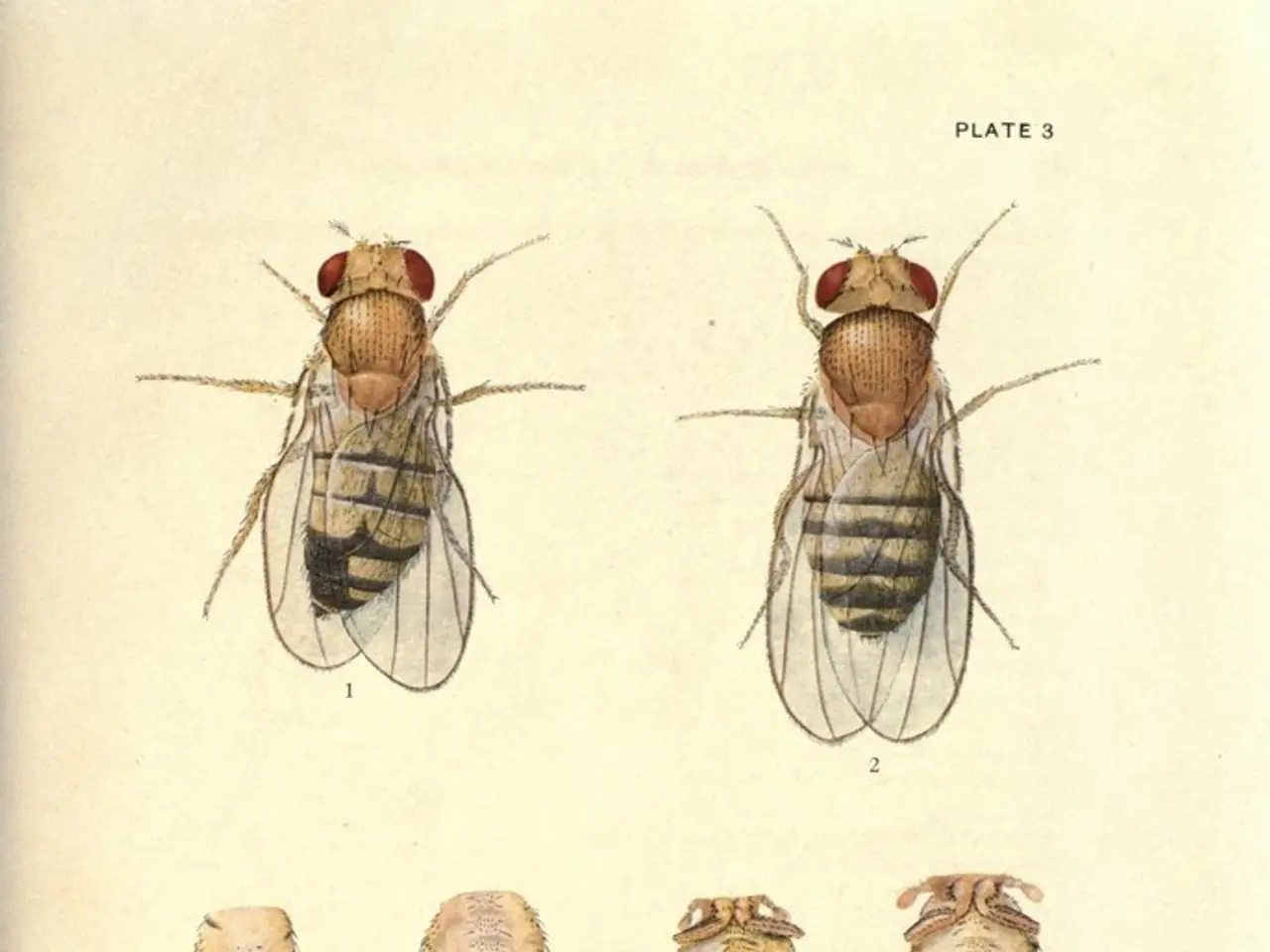Methods for Controlling Pests on Citrus Trees Grown in Home Gardens
In the world of citrus cultivation, maintaining a healthy and fruitful orchard requires a strategic approach to pest management. Organic and Integrated Pest Management (IPM) methods have emerged as effective solutions, minimising chemical pesticide use and promoting orchard health.
Common citrus tree pests, such as aphids, spider mites, and whiteflies, can weaken trees, making them more susceptible to disease. Aphids, tiny green or black bugs that gather on new growth and leave sticky honeydew on leaves, can stunt growth. Whiteflies, little white insects that flutter around when disturbed and can cause yellowing and wilting, pose similar threats. Spider mites, identifiable by tiny webs or yellowing leaves, often hide on the undersides of leaves and can lead to leaf drop.
Effective pest management strategies revolve around organic treatments, biological control, cultural practices, mechanical and physical controls, and careful monitoring. Regular inspection of citrus trees is crucial to identify pest presence early and assess population levels. Actions are taken only if pest populations exceed economic thresholds, reducing unnecessary interventions.
Organic treatments, such as neem oil and insecticidal soaps, are safe and effective sprays against aphids, spider mites, and whiteflies. Neem oil interferes with pest feeding and reproduction, while soaps physically disrupt pest cell membranes without harmful residues.
Biological control involves promoting and conserving natural enemies of pests, such as ladybird beetles, lacewings, parasitic wasps, and predatory mites. These beneficial organisms naturally suppress pest populations, supporting sustainable pest control.
Cultural practices, including orchard hygiene, proper irrigation management, pruning to improve airflow, and maintaining balanced nutrition, help keep trees healthy and more resistant to pest attacks.
Mechanical and physical controls, like barriers, sticky traps, or manual removal, can disrupt pest life cycles. For example, sticky traps can help catch whiteflies and monitor pest levels.
Chemical control is a last resort, used selectively when necessary to minimise impact on beneficial insects. Rotating modes of action and applying targeted treatments based on scouting data help prevent resistance.
Integrating these methods forms a resilient IPM program tailored to citrus orchards, reducing pesticide reliance by up to 50% while sustaining healthy fruit production. Biological control agents are particularly significant, as research shows they colonise even protected citrus systems effectively, providing natural suppression of pest outbreaks.
In addition to these strategies, gardeners can also employ methods like introducing beneficial insects, such as ladybugs, that eat harmful pests, and creating wild areas to provide shelter for these beneficial organisms. Unconventional treatments, like garlic spray, can also help drive pests away.
In summary, a successful pest management strategy focuses on combining organic treatments (neem oil, soaps), biological control, and cultural practices with careful monitoring to maintain pest populations below harmful levels while preserving environmental and tree health.
Connecting the concepts from the given text, here are two sentences that incorporate the words 'lifestyle', 'home-and-garden', and 'gardening': A gardener's lifestyle can include adopting Integrated Pest Management (IPM) methods for their home-and-garden, promoting gardening practices that are mindful of orchard health and the environment. The home-and-garden environment can benefit from IPM strategies, integrating organic treatments, biological control, and cultural practices, ultimately leading to a flourishing and pest-resistant garden.




